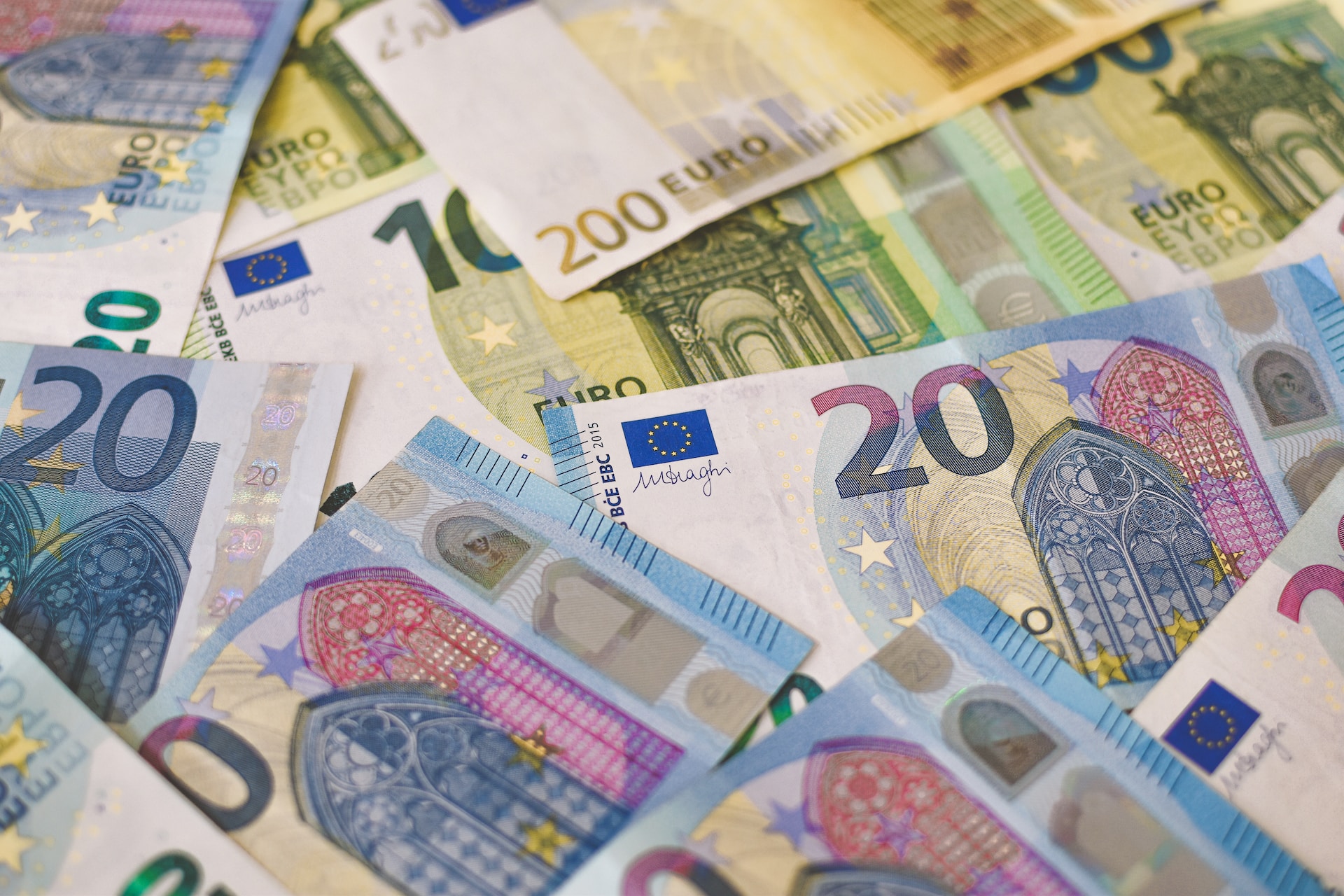Understanding Currency Pairs: A Beginner’s Primer
Currency trading, often referred to as forex trading, is a dynamic and potentially lucrative financial market where currencies are exchanged. To engage in forex trading effectively, it’s essential to comprehend the concept of currency pairs. This beginner’s primer will provide you with a comprehensive understanding of currency pairs, the foundation of forex trading.
Chapter 1: The Basics of Currency Trading
Currency trading involves buying one currency while simultaneously selling another. It’s a comparative market where the value of one currency is determined in relation to another. This dual nature is where currency pairs come into play.
currency trading, often referred to as forex trading, is a complex financial market where currencies are exchanged. Unlike the stock market, where you buy and sell shares of companies, forex trading involves the simultaneous purchase of one currency and the sale of another. It’s like engaging in a global game of seesaw, where one currency rises, and the other falls. The forex market operates 24 hours a day, five days a week, making it one of the most accessible and liquid financial markets globally.
To participate in forex trading effectively, understanding the fundamental concepts is crucial. You need to know how to analyse currency pairs, interpret exchange rates, and make informed trading decisions. Furthermore, recognizing the factors that influence currency movements, such as economic indicators, central bank policies, and geopolitical events, is essential for making successful trades. As you delve deeper into this chapter, you’ll gain a solid foundation that will serve as a stepping stone for your forex trading journey.
Chapter 2: What Are Currency Pairs?
A currency pair is a combination of two currencies, with one being the base currency and the other the quote currency. For example, in the EUR/USD pair, EUR is the base currency, and USD is the quote currency. This pairing allows you to express the relative value of one currency against another.
At the core of forex trading are currency pairs, the dynamic duo of the forex market. A currency pair is like a mathematical equation, with one side representing the value of the base currency and the other side the value of the quote currency. The base currency is the one you’re buying or selling, while the quote currency represents the price of the base currency in terms of the other. This pairing enables traders to express the value of one currency concerning another, facilitating the exchange process. As a beginner, you’ll come across major, minor, and exotic currency pairs, each with its unique characteristics. Learning how to identify and work with these pairs is crucial, as it influences your trading strategies and risk management.
Understanding currency pairs is like understanding the alphabet of the forex market. Just as you need to know your ABCs to form words and sentences, you need to master currency pairs to create effective trading strategies. The relationship between the base and quote currency influences every trade you make, and as you progress through this chapter, you’ll gain the proficiency to interpret these pairs and use them to your advantage in the forex market. Whether you’re tracking the euro against the dollar or the yen against the pound, currency pairs are your companions in the forex journey.
Chapter 3: Major, Minor, and Exotic Currency Pairs
In Chapter 3, we delve into the diverse world of currency pairs, categorizing them into three main groups. Major pairs, which involve the world’s most traded currencies, are your gateway into forex trading. They offer high liquidity and are typically less volatile than other pairs. Minor pairs, on the other hand, exclude the US Dollar but still encompass strong global currencies. They provide a broader perspective on the forex market and are favored by traders seeking diversity. Finally, exotic pairs introduce us to less common and emerging-market currencies. These pairs can be more volatile, making them appealing to risk-tolerant traders. As you explore these categories, you’ll begin to appreciate the variety and opportunity that currency pairs bring to your forex trading journey.
Currencies, like people, have their own personalities. Understanding their character can make all the difference in your trading success.” – Kathy Lien
Currency pairs are categorized into three main groups:
Major Pairs: These pairs involve the most widely traded currencies globally. Examples include EUR/USD, USD/JPY, and GBP/USD.
Minor Pairs: Minor pairs don’t include the US Dollar but still feature major currencies like EUR, GBP, and JPY. Examples include EUR/GBP and AUD/JPY.
Exotic Pairs: Exotic pairs involve one major currency and one from an emerging or smaller economy. They tend to be less liquid and have higher spreads. Examples include USD/TRY and EUR/SGD.
Chapter 4: Understanding Exchange Rates
Exchange rates indicate how much of the quote currency you need to buy one unit of the base currency. For example, if the EUR/USD exchange rate is 1.1500, it means you need 1.15 US dollars to purchase one Euro. Exchange rates are continually fluctuating, reflecting market dynamics and economic events.
Exchange rates are the heartbeat of the forex market, guiding every trade decision you make. In this chapter, we dissect exchange rates to understand how they represent the value of one currency in relation to another. You’ll discover how these rates fluctuate based on market dynamics, economic data, and geopolitical events. A thorough grasp of exchange rates is like having a compass in the forex market, directing your decisions and allowing you to navigate the intricate web of currency trading.
Chapter 5: Reading Currency Pair Quotes
Understanding how to read currency pair quotes is fundamental. Forex quotes typically consist of two prices: the bid price and the ask price. The bid price is the price at which you can sell the base currency, while the ask price is the price at which you can buy it.
Chapter 5 introduces you to the vital skill of reading currency pair quotes. Forex quotes typically consist of two prices, the bid price and the ask price, forming the foundation of every trade. The bid price is what you receive when selling a currency, while the ask price is what you pay when buying. These quotes might appear daunting at first, but with the insights you gain in this chapter, you’ll become fluent in deciphering these numbers and making precise trading decisions.
Chapter 6: The Role of Cross-Currency Pairs
Cross-currency pairs, also known as crosses, do not involve the US Dollar. Instead, they pair two other major currencies. Crosses are valuable for diversification and can provide insights into currency movements.
Cross-currency pairs, often referred to as crosses, serve as intriguing characters in the forex drama. These pairs don’t involve the US Dollar but rather pair two other major currencies. Chapter 6 dives into the significance of crosses, demonstrating how they can be instrumental in diversifying your portfolio and providing unique insights into currency movements. As you progress through this chapter, you’ll uncover the hidden gems of cross-currency pairs and their value in your forex trading strategies.
Chapter 7: Influences on Currency Pair Movements
Currency pair movements are influenced by a myriad of factors, including economic data releases, central bank decisions, geopolitical events, and market sentiment. Understanding these influences is crucial for successful forex trading.
Understanding the factors that influence currency pair movements is vital for effective forex trading. In Chapter 7, we explore the dynamic forces at play, including economic data releases, central bank decisions, geopolitical events, and market sentiment. These influences are the currents beneath the forex market’s surface, driving the ebb and flow of currency values. As you grasp the intricacies of these influences, you’ll be better equipped to make informed trading decisions and navigate the volatile seas of forex trading.
Chapter 8: Using Currency Pairs for Trading Strategies
Currency pairs are central to formulating trading strategies. Whether you’re interested in trend following, range trading, or breakout strategies, the choice of currency pairs plays a vital role in your trading decisions.
Trading strategies are the tools of the trade in forex, and Chapter 8 demonstrates how currency pairs play a central role in these strategies. Whether you’re inclined toward trend following, range trading, or breakout strategies, the choice of currency pairs is your compass. The specific pairs you choose can determine your entry and exit points, risk management, and overall success in the forex market. This chapter provides valuable insights into how to select the right currency pairs that align with your trading objectives and strategies.
Chapter 9: Currency Pairs and Risk Management
Risk management is essential in forex trading. Currency pairs with higher liquidity tend to have narrower spreads, making them more suitable for risk management strategies like stop-loss orders.
Chapter 9 delves into the crucial world of risk management and its connection to currency pairs. While forex trading offers significant opportunities, it also carries inherent risks. To protect your capital, you need to understand how the liquidity and volatility of currency pairs affect your risk management strategies. Narrow spreads and liquidity are your allies in setting effective stop-loss orders and defining your risk tolerance. This chapter equips you with the knowledge to use currency pairs strategically in your risk management efforts, safeguarding your trading capital in the dynamic world of forex.
Conclusion
Understanding currency pairs is the foundation of successful forex trading. As a beginner, grasping the nuances of base and quote currencies, exchange rates, and how market events impact currency movements is crucial. With this primer, you’re well on your way to confidently navigating the dynamic world of forex trading and making informed trading decisions. Currency pairs are the building blocks of your forex journey, and the more you comprehend them, the more adept you become at trading in the global currency market.


Sed lacinia, urna non tincidunt mattis, tortor neque adipiscing diam, a cursus ipsum ante quis turpis. Nulla facilisi. Ut fringilla. Suspendisse potenti. Nunc feugiat mi a tellus consequat imperdiet. Vestibulum sapien. Proin quam. Etiam ultrices.
Morbi lectus risus, iaculis vel, suscipit quis, luctus non, massa. Fusce ac turpis quis ligula lacinia aliquet. Mauris ipsum. Nulla metus metus, ullamcorper vel, tincidunt sed, euismod in, nibh.
Quisque volutpat condimentum velit. Class aptent taciti sociosqu ad litora torquent per conubia nostra, per inceptos himenaeos. Nam nec ante.
Vestibulum sapien. Proin quam. Etiam ultrices. Suspendisse in justo eu magna luctus suscipit. Sed lectus. Integer euismod lacus luctus magna. Quisque cursus, metus vitae pharetra auctor,